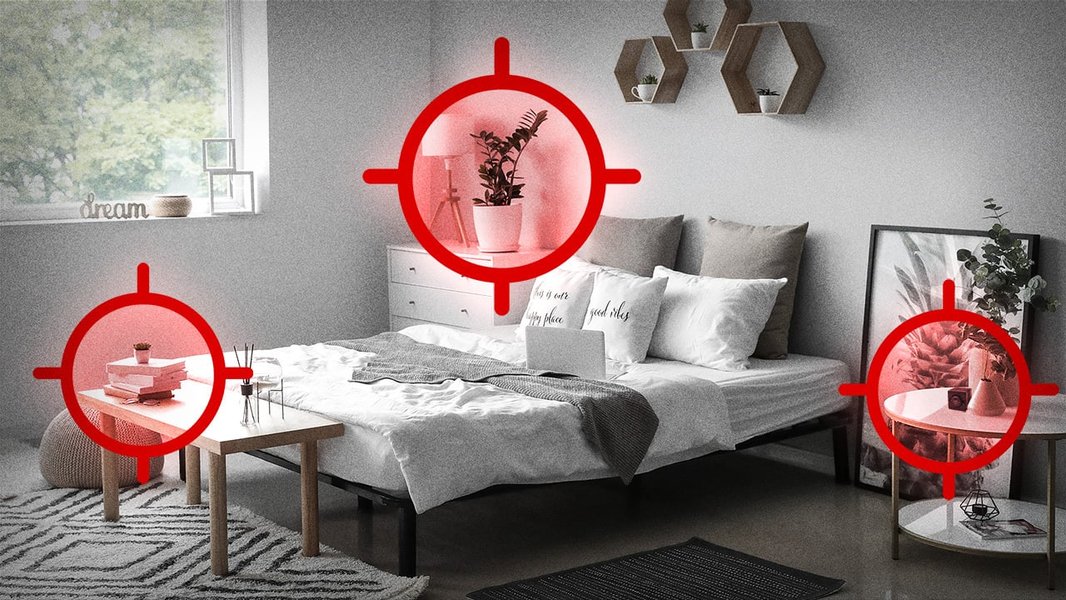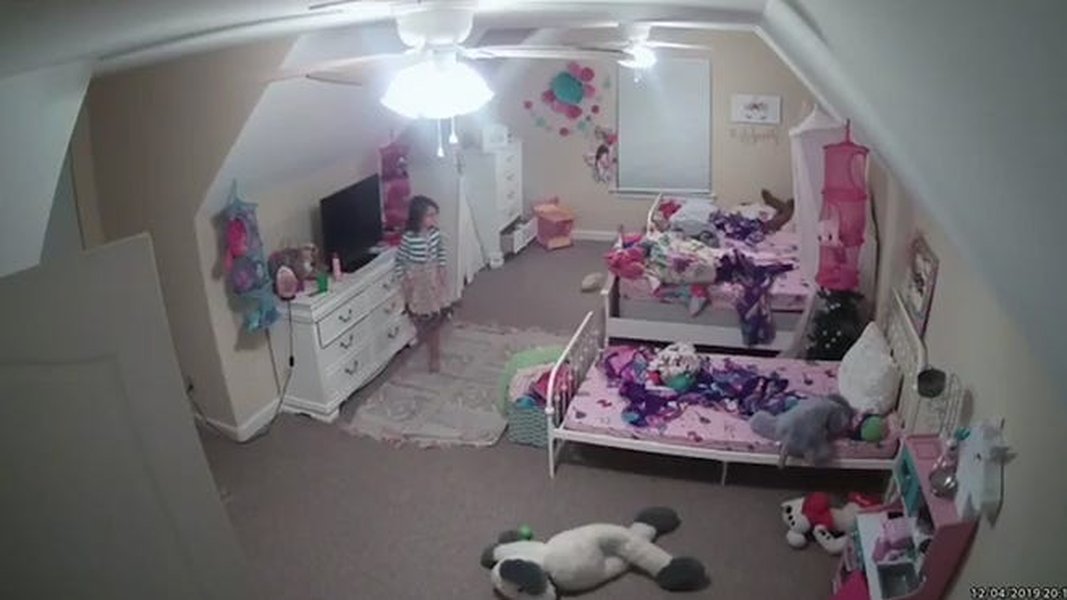
The Dark Side of Surveillance: Exposed Camera Feeds and Online Privacy
Exploring the Disturbing Phenomenon of Hacked Cameras and Leaked Video Content
Key Highlights
- Vulnerable Security Cameras: Millions of security cameras, baby monitors, and smart doorbells are vulnerable to hacking, allowing unauthorized access to video and audio feeds.
- Privacy Invasion: Hackers exploit security flaws to spy on users, sometimes broadcasting private moments online without their knowledge or consent.
- Prevention Strategies: Securing webcams and IP cameras requires strong passwords, updated firmware, and secure network practices to mitigate the risk of unauthorized access.
The Alarming Reality of Webcam and Security Camera Hacking
The proliferation of webcams and security cameras has brought convenience and security to our lives, but it has also opened doors to serious privacy breaches. Cybercriminals are increasingly targeting these devices, exploiting vulnerabilities to gain access to live feeds and recorded footage. This unauthorized access can lead to the exposure of highly sensitive and personal moments, causing significant distress and potential harm to victims. The issue is compounded by websites that aggregate and share these hacked camera feeds, often without the knowledge or consent of those being recorded.

A hidden camera disguised as a phone charger.
How Hackers Gain Access to Your Camera
Several methods allow hackers to compromise webcams and security cameras. One common technique involves exploiting default passwords. Many users fail to change the default passwords on their devices, making it easy for hackers to gain access using readily available credentials. Firmware vulnerabilities also pose a significant risk. Outdated firmware often contains security flaws that hackers can exploit to bypass security measures. Additionally, unencrypted communication channels can allow hackers to intercept video feeds as they are transmitted over the internet.
Specific vulnerabilities like Cross-Site Request Forgery (CSRF) can be exploited, where hackers send unintended requests to applications on behalf of users. In other cases, applications do not limit password attempts, enabling hackers to use brute-force attacks to guess passwords. Storage vulnerabilities can also be targeted, allowing hackers to access physical or cloud storage where CCTV footage is backed up.
The Role of Online Platforms in Disseminating Hacked Feeds
A disturbing aspect of this issue is the existence of websites and online platforms that collect and share feeds from hacked cameras. These sites often aggregate feeds from thousands of unsecured devices, creating a vast network of voyeuristic content. Some sites compile internet-connected cameras that either lack passwords or still use default passwords. These platforms highlight the importance of security settings, noting that changing the default password can remove a camera from such sites.
The availability of these feeds raises serious ethical and legal questions. While some operators claim to only host feeds from devices that are intentionally public, the reality is that many victims are unaware their cameras have been compromised. This lack of consent transforms these platforms into tools for privacy invasion and potential exploitation.
Examples of Camera Hacking and Data Leaks
Numerous incidents highlight the severity of camera hacking and data leaks. One notable example involves a major hack of a camera company, where hackers gained access to a vast number of installed cameras. These incidents underscore the potential for widespread privacy breaches when security measures are inadequate.
Another concerning trend is the leakage of sensitive data from adult webcam platforms. For instance, the CAM4 adult cam site suffered a massive data leak, exposing billions of records, including names, sexual orientations, payment logs, and chat transcripts. Such breaches can have devastating consequences for individuals, leading to identity theft, blackmail, and reputational damage. In another incident, an adult site leaked 875,000 extremely sensitive records, including driver's licenses and other personally identifiable information (PII).
Furthermore, even seemingly innocuous apps can pose a risk. The Camera360 Ultimate app, for example, was found to inadvertently leak sensitive data, granting unauthorized access to users' information.
Steps to Protect Your Webcams and Security Cameras
Protecting your webcams and security cameras from hacking requires a multi-faceted approach. Here are some essential steps you can take:

A security camera monitoring a home.
-
Change Default Passwords: Always change the default passwords on your devices to strong, unique passwords.
-
Update Firmware Regularly: Keep your device firmware up to date to patch any known security vulnerabilities.
-
Secure Your Wi-Fi Network: Use a strong password for your Wi-Fi network and enable encryption (WPA3 is recommended).
-
Use a Firewall: A firewall can help prevent unauthorized access to your network and devices.
-
Enable Two-Factor Authentication: If available, enable two-factor authentication for an added layer of security.
-
Cover Your Webcam: When not in use, physically cover your webcam to prevent unauthorized access.
-
Monitor Camera Activity: Regularly check your camera's activity logs for any suspicious behavior.
-
Be Mindful of Placement: Consider the placement of your cameras to avoid capturing sensitive areas or activities.
The Importance of Strong Passwords
One of the most basic but crucial steps in securing your devices is to use strong, unique passwords. A strong password should be at least 12 characters long and include a combination of upper and lower case letters, numbers, and symbols. Avoid using easily guessable information such as your name, birthday, or address. It's also important to use a different password for each of your devices and online accounts. If one password is compromised, it won't give hackers access to all of your accounts.
Understanding Firmware Updates
Firmware is the software that controls the basic functions of your webcam or security camera. Manufacturers regularly release firmware updates to fix bugs, improve performance, and patch security vulnerabilities. Installing these updates is essential to keep your devices secure. Most devices offer automatic firmware updates, but it's a good idea to check for updates manually on a regular basis.
Securing Your Network
Your home network is the gateway to all of your connected devices, so it's important to secure it properly. Use a strong password for your Wi-Fi network and enable encryption. WPA3 is the latest and most secure encryption protocol, so use it if your router supports it. You should also consider using a firewall to block unauthorized access to your network. A firewall acts as a barrier between your network and the outside world, preventing hackers from gaining access to your devices.
Tools and Techniques Used by Hackers
Hackers employ various tools and techniques to compromise webcams and security cameras. One common method involves using search engines like Shodan to identify devices with open ports or default credentials. Shodan allows hackers to scan the internet for specific types of devices and identify those that are vulnerable. Once a vulnerable device is found, hackers can use tools like Cameradar to attempt to crack the password. Cameradar is a brute-force tool that tries a list of common usernames and passwords to gain access to IP cameras.
Another technique involves exploiting firmware vulnerabilities. Hackers often reverse engineer firmware updates to identify security flaws that they can then exploit to gain access to devices. They may also use man-in-the-middle attacks to intercept communication between the camera and the user, allowing them to steal credentials or inject malicious code.
| Vulnerability Type | Description | Mitigation |
|---|---|---|
| Default Passwords | Devices are left with factory-set default passwords, easily guessed by hackers. | Change default passwords to strong, unique ones immediately after setup. |
| Firmware Vulnerabilities | Outdated firmware contains security flaws that hackers can exploit. | Regularly update firmware to the latest version to patch security holes. |
| Unencrypted Communication | Video feeds are transmitted without encryption, allowing interception. | Ensure cameras use encrypted communication protocols (e.g., HTTPS). |
| Cross-Site Request Forgery (CSRF) | Hackers send unauthorized requests on behalf of users. | Implement CSRF protection mechanisms in applications. |
| Unlimited Password Attempts | Applications do not restrict password attempts, enabling brute-force attacks. | Limit the number of password attempts and implement account lockout policies. |
Common vulnerabilities in CCTV systems and methods to mitigate them.
Legal and Ethical Considerations
Accessing someone's webcam or security camera without their consent is a serious violation of privacy and can have legal consequences. Depending on the jurisdiction, it may be considered a criminal offense, punishable by fines or imprisonment. Even if the camera is located in a public place, accessing the feed without authorization may still be illegal.
From an ethical standpoint, accessing someone's camera feed without their consent is a clear violation of their privacy. It is important to respect people's privacy and to only access camera feeds with their explicit permission. If you discover a website or online platform that is hosting feeds from hacked cameras, you should report it to the appropriate authorities.
FAQ
Frequently Asked Questions
How can I tell if my webcam has been hacked?
Some signs that your webcam may have been hacked include the webcam light turning on unexpectedly, unusual webcam activity, or the discovery of unauthorized recordings.
What should I do if I think my camera has been hacked?
If you suspect your camera has been hacked, disconnect it from the internet immediately. Change the password, update the firmware, and run a virus scan on your computer. You should also report the incident to the authorities.
Are all webcams and security cameras vulnerable to hacking?
While not all devices are equally vulnerable, any device connected to the internet is potentially at risk. Taking proactive steps to secure your devices can significantly reduce your risk of being hacked.
Is it legal to view feeds from unsecured cameras?
Even if a camera feed is publicly accessible, accessing it without the owner's consent may be illegal in some jurisdictions. It is always best to err on the side of caution and respect people's privacy.
How can I report a website that is hosting feeds from hacked cameras?
You can report the website to the hosting provider, the domain registrar, or law enforcement agencies. Providing as much information as possible about the website and the hacked camera feeds will help them investigate the matter.
References
Last updated April 13, 2025